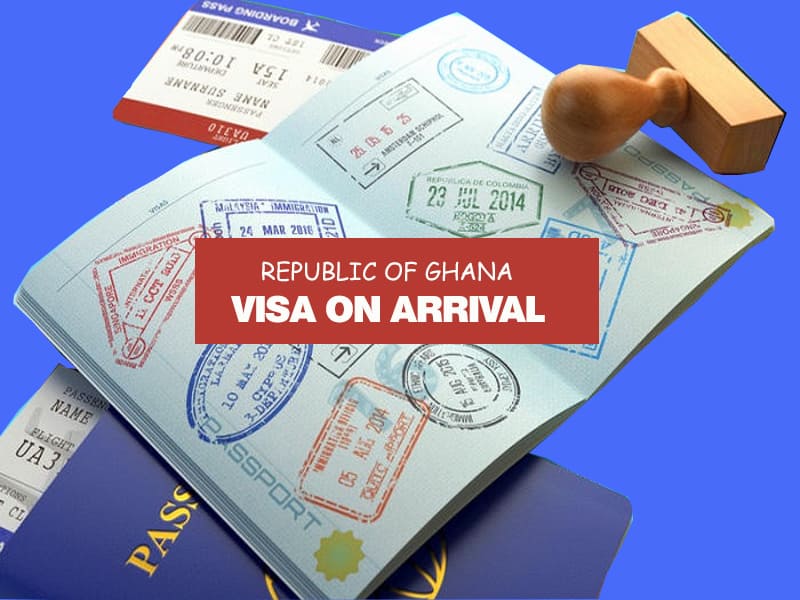If you’re planning a trip to Vietnam, one of the most important things to consider is whether or not you need a visa. Fortunately, for many travelers, it’s possible to obtain a visa on arrival in Vietnam. In this article, we’ll explore who can get a visa on arrival, what the requirements are, when to apply, how to do so, pros and cons of getting a visa on arrival, alternatives, step by step guide, comparisons, tips, and more.
Table of Contents
Who Can Get a Visa on Arrival in Vietnam?
Citizens from over 160 countries around the world are eligible for a visa on arrival in Vietnam. Some of the most common countries include the United States, Canada, Australia, and the United Kingdom. However, there are some exceptions, so it’s important to check with the Vietnamese embassy or consulate in your country to see if you qualify.
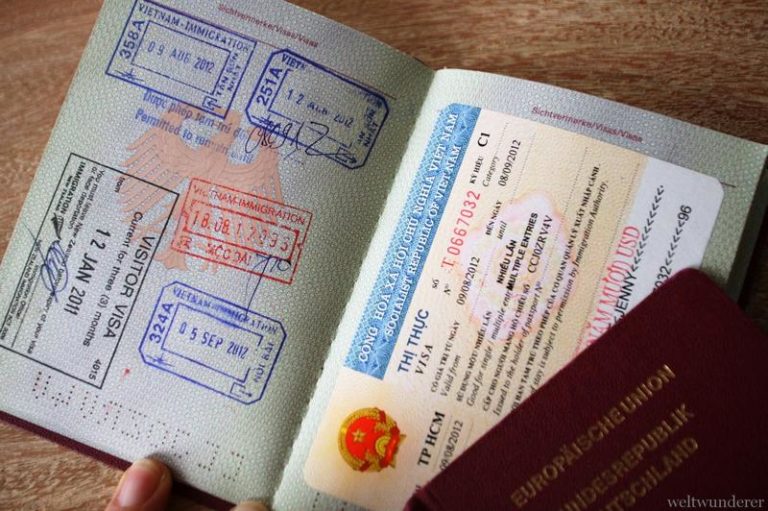
What Are the Requirements for a Visa on Arrival?
To obtain a visa on arrival in Vietnam, you’ll need to have a few key documents. These include:
- A passport that is valid for at least six months after your planned departure from Vietnam
- A completed application form (which can be downloaded online)
- A passport-sized photo
- A letter of approval from the Vietnamese Immigration Department
Once you have these documents, you can apply for a visa on arrival at the airport when you arrive in Vietnam.
When Should You Apply for a Visa on Arrival?
You should apply for a visa on arrival in Vietnam as soon as possible before your trip. It’s recommended that you apply at least two weeks in advance to ensure that you have enough time to receive your letter of approval from the Vietnamese Immigration Department.
How to Obtain a Visa on Arrival in Vietnam
Here is a step-by-step guide on how to obtain a visa on arrival in Vietnam:
- Complete the online application form (which can be found on the Vietnamese embassy or consulate website).
- Pay the visa processing fee.
- Wait for a letter of approval from the Vietnamese Immigration Department.
- Print out the letter of approval and bring it with you to the airport.
- When you arrive at the airport in Vietnam, go to the visa on arrival counter and present your documents.
- Pay the stamping fee (in cash) and have your photo taken.
- Receive your visa and proceed through customs.
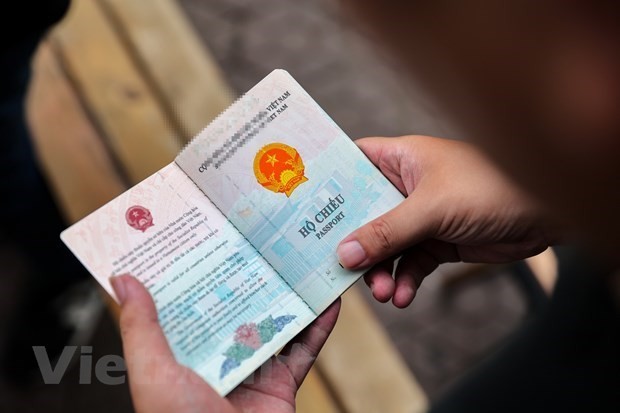
Pros and Cons of Getting a Visa on Arrival
Like any travel arrangement, there are pros and cons to getting a visa on arrival in Vietnam. Here are some of the main advantages and disadvantages:
Pros
- Convenient: You don’t need to visit a Vietnamese embassy or consulate before your trip.
- Fast: The process of obtaining a visa on arrival is usually quicker than applying for a traditional visa.
- Affordable: The fees for a visa on arrival are typically lower than those for a traditional visa.
Cons
- Limited ports of entry: You can only obtain a visa on arrival if you’re arriving via certain airports (Noi Bai, Tan Son Nhat, Da Nang, Cam Ranh, Phu Quoc) or seaports (Hon Gai, Hai Phong, Nha Trang).
- Potential complications: If you make any mistakes on your application or forget any required documents, it could cause delays or even result in being denied entry into Vietnam.
Alternatives to Getting a Visa on Arrival
If you’re not eligible for a visa on arrival or prefer another option, you can also apply for a traditional visa at a Vietnamese embassy or consulate in your home country. Additionally, if you’re planning to stay in Vietnam for an extended period of time or work there, you may need to apply for a different type of visa.
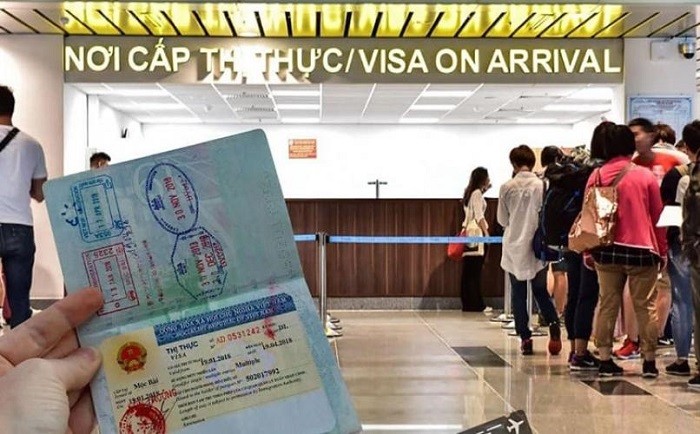
Comparing Visas: On Arrival vs. Traditional
Here’s how getting a visa on arrival in Vietnam compares to applying for a traditional visa:
Visa on Arrival
- Pros: Convenient, fast, and affordable.
- Cons: Limited ports of entry and potential complications.
Traditional Visa
- Pros: Widely accepted at all Vietnamese ports of entry, and no need to worry about mistakes or missing documents when you arrive.
- Cons: Requires an in-person visit to a Vietnamese embassy or consulate before your trip, and can take longer to process than a visa on arrival.
Tips for Getting a Visa on Arrival in Vietnam
To make the process of obtaining a visa on arrival in Vietnam as smooth as possible, here are some helpful tips:
- Double-check the eligibility requirements before you apply.
- Apply for your visa as soon as possible to ensure that you have enough time to receive your letter of approval.
- Make sure you have all the required documents with you when you arrive at the airport.
- Bring cash to pay the stamping fee (which is typically around $25 USD).
- Be prepared for long lines and potential delays at the airport.
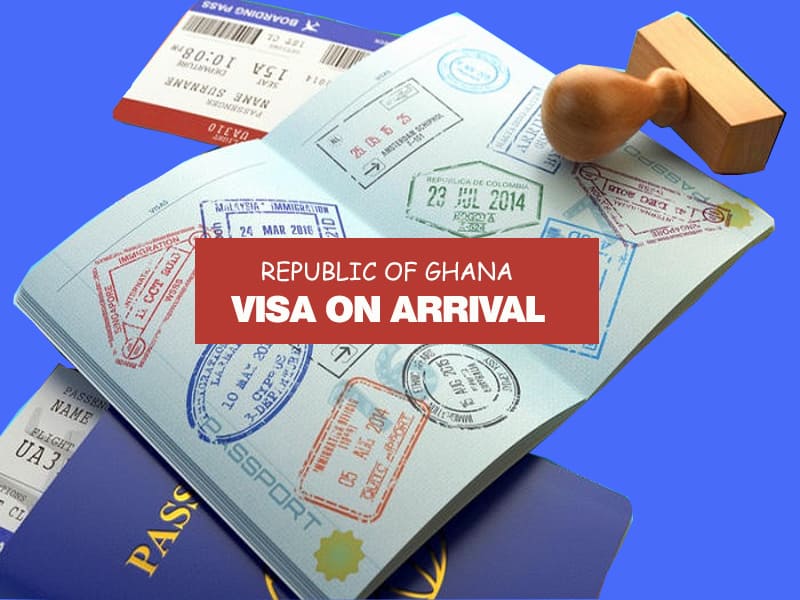
Conclusion
Inconclusion, getting a visa on arrival in Vietnam is a convenient and affordable option for many travelers. While there are some limitations and potential complications, following the guidelines and tips outlined in this article can help make the process as smooth as possible.
If you’re planning a trip to Vietnam, be sure to check whether or not you’re eligible for a visa on arrival and begin the application process as soon as possible. With the right preparation and documentation, getting a visa on arrival in Vietnam can be an easy and stress-free experience.
FAQs:
- Is it possible to extend a visa on arrival in Vietnam?
Yes, it’s possible to extend a visa on arrival in Vietnam. You can either visit a local Vietnamese immigration office or hire a visa agent to do so on your behalf.
- What happens if I’m denied a visa on arrival in Vietnam?
If you’re denied a visa on arrival at the airport in Vietnam, you’ll need to return to your home country. It’s important to double-check all eligibility requirements and required documents before applying for a visa on arrival to avoid this situation.
- How long does it usually take to receive a letter of approval for a visa on arrival in Vietnam?
It usually takes around 2-3 business days to receive a letter of approval for a visa on arrival in Vietnam. However, processing times may vary depending on the embassy or consulate you apply through.
- Can I travel to Vietnam without a visa?
Citizens from select countries are eligible for a visa exemption if they plan to stay in Vietnam for a limited amount of time. However, most travelers will need to obtain a visa before their trip or upon arrival.
- Is it safe to travel to Vietnam?
Vietnam is generally considered to be a safe destination for travelers. However, like any foreign country, it’s important to take necessary precautions and stay aware of your surroundings while traveling.Title: How to Get a Visa on Arrival in Vietnam: A Comprehensive Guide
Introduction:
If you’re planning a trip to Vietnam, one of the first things you’ll need to consider is how to obtain your visa. While there are several options available, getting a visa on arrival is a popular choice for many travelers due to its convenience and affordability. In this article, we’ll provide you with a comprehensive guide on how to get a visa on arrival in Vietnam, including eligibility requirements, application procedures, pros and cons, and more.
Who is eligible for a visa on arrival in Vietnam?
First and foremost, it’s important to determine whether or not you’re eligible for a visa on arrival in Vietnam. Citizens from most countries are eligible, but there are some exceptions. To be eligible, you must be arriving in Vietnam by air and hold a passport that is valid for at least six months beyond your date of entry.
What are the application procedures for a visa on arrival in Vietnam?
To apply for a visa on arrival in Vietnam, you’ll need to follow these steps:
Step 1: Fill out an online application form You can fill out an online application form through a Vietnamese embassy or consulate’s website or through a third-party agency. You’ll need to provide personal information, travel details, and other required documents.
Step 2: Pay the processing fee You’ll need to pay a processing fee, which varies depending on the type of visa you’re applying for and the agency you’re using. You can usually pay via credit card or PayPal.
Step 3: Receive a letter of approval Once your application is processed and approved, you’ll receive a letter of approval via email. This letter will allow you to board your flight and obtain your visa on arrival when you arrive in Vietnam.
Step 4: Obtain your visa on arrival When you arrive at the airport in Vietnam, proceed to the visa on arrival counter and present your passport, letter of approval, and other required documents. You’ll need to pay a stamping fee in cash (USD or VND) to obtain your visa.
Pros and cons of getting a visa on arrival in Vietnam
Like any travel document, there are both pros and cons to getting a visa on arrival in Vietnam. Here are some of the main advantages and disadvantages to consider:
Pros:
- Convenient and affordable
- No need to visit a Vietnamese embassy or consulate in person
- Easy online application process
- Multiple entry options available
Cons:
- Potential for complications if you don’t have all required documents
- Only applicable for air travelers
- Possible long wait times at the airport for visa processing
- Not guaranteed approval upon arrival
Alternatives to a visa on arrival in Vietnam
If you’re not eligible for a visa on arrival in Vietnam or prefer to obtain your visa beforehand, there are several alternatives to consider:
- E-visa: An e-visa is an electronic version of a regular visa that you can apply for online. It’s available for citizens from select countries and allows for a single entry stay of up to 30 days.
- Regular visa: You can also obtain a regular visa by visiting a Vietnamese embassy or consulate in person. This option may be more time-consuming and expensive than a visa on arrival, but it guarantees approval before your trip.
Step-by-step guide to getting a visa on arrival in Vietnam
To help simplify the application process, here’s a step-by-step guide to getting a visa on arrival in Vietnam:
Step 1: Determine your eligibility Before applying for a visa on arrival, make sure you meet all eligibility requirements.
Step 2: Fill out an online application form Fill out an online application form through a Vietnamese embassy or consulate’s website or through a third-party agency.
Step 3: Pay the processing fee Pay the processing fee via credit card or PayPal.
Step 4: Receive a letter of approval Receive a letter of approval via email, which will allow you to board your flight and obtain your visa on arrival when you arrive in Vietnam.
Step 5: Obtain your visa on arrival When you arrive at the airport in Vietnam, present your passport, letter of approval, and other required documents at the visa on arrival counter. Pay the stamping fee in cash (USD or VND) to obtain your visa.
Comparison between different types of visas for Vietnam
To help you decide which type of visa is best for your needs, here’s a comparison of different types of visas for Vietnam:
Visa on arrival:
- Pros: Convenient, affordable, easy online application process, multiple entry options available.
- Cons: Potential for complications if you don’t have all required documents, only applicable for air travelers, possible long wait times at the airport for visa processing, not guaranteed approval upon arrival.
E-visa:
- Pros: Easy online application process, quick processing time, multiple entry options available, valid for up to 30 days.
- Cons: Only available for citizens from select countries, single entry only.
Regular visa:
- Pros: Guaranteed approval before your trip, multiple entry options available, longer stay options available.
- Cons: More time-consuming and expensive than a visa on arrival or e-visa, requires in-person visit to a Vietnamese embassy or consulate.
Tips for getting a visa on arrival in Vietnam
To increase your chances of a smooth visa on arrival process, here are some helpful tips:
- Double-check all eligibility requirements and required documents before applying.
- Apply for your visa on arrival as early as possible to allow for processing time.
- Print out all necessary documents and keep them with you while traveling.
- Bring enough cash (USD or VND) to pay the stamping fee at the airport.
- Be patient and prepared for long wait times at the airport for visa processing.
The best way to get a visa on arrival in Vietnam
The best way to get a visa on arrival in Vietnam is to do your research, follow all guidelines and requirements, and apply as early as possible. Utilizing a reputable third-party agency can also help simplify the application process and ensure that you have all necessary documents.
In conclusion, getting a visa on arrival in Vietnam is a convenient and affordable option for many travelers. While there are some limitations and potential complications, following the guidelines and tips outlined in this article can help make the process as smooth as possible.
If you’re planning a trip to Vietnam, be sure to check whether or not you’re eligible for a visa on arrival and begin the application process as soon as possible. With the right preparation and documentation, getting a visa on arrival in Vietnam can be an easy and stress-free experience.
